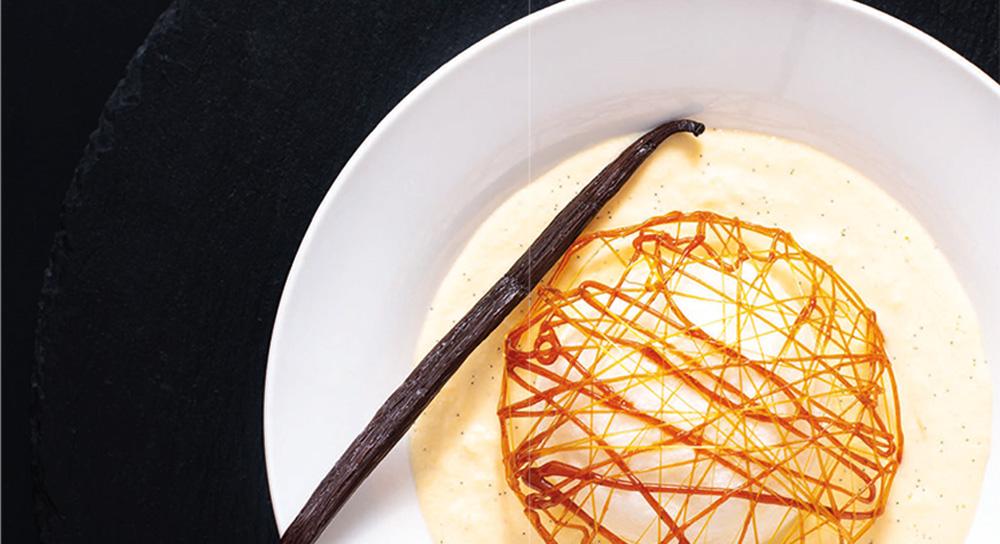
Île Flottante
Serves 4 to 6
Preparation time 15 minutes, plus 1 hour resting time
Cooking time 30 minutes
Not to be confused with that other floating favourite oeufs à la neige, this recipe is quick and easy to prepare and can be made in advance.
Ingredients
- 6 egg whites
- 180g (61/4oz) granulated sugar
- 120g (41/4oz) coarsely crushed sugared almonds
- (white)
- 600ml (1 pint) vanilla sauce (custard)
Directions
1Preheat the oven to 180°C (350°F/Gas Mark 4).
2Beat the egg whites until very stiff, adding 50g (31/2 tbsp) of granulated sugar halfway through. Once the whites are stiff, add the rest of the sugar and beat lightly for 30 seconds more. Stir in the crushed sugared almonds.
3Butter a 16cm (6in) straight-sided charlotte mould (or ribbed 22cm (81/2in) brioche mould) and sprinkle with sugar. Fill with the beaten egg whites and bake in a bain-marie for 30 minutes, covering the mould with a piece of lightly buttered aluminium foil to prevent the egg whites from browning.
4Remove from the oven and allow to cool. Pour the cold vanilla sauce (custard) onto a serving platter. Turn out the cold île flottante onto the vanilla sauce and chill for at least an hour before serving.
Extracted from Taste of France Magazine.
Originally from Lenôtre’s Desserts and Pastries by Gaston Lenôtre.
Note: There has always been some confusion between the two desserts île flottante (floating island) and oeufs à la neige (eggs in snow). Not surprisingly, really, since the former is normally made with one large meringue baked in a bain-marie (as Gaston Lenôtre suggests here), while the latter usually features smaller pieces of poached meringue.
Of course, different chefs swear by different methods. Larousse Gastronomique even describes an early version of île flottante “made with slices of stale Savoy sponge or brioche, moistened with liqueur and sandwiched together with apricot jam, containing chopped almonds and raisins” – which might sound appealing to some diners, but perhaps not to others.
According to John Ayto, author of The Diner’s Dictionary, the first reference to floating island in the English language was in a 1771 letter written by the future American president Benjamin Franklin. “At dinner, had a floating island,” he wrote.
Lead photo credit : Île Flottante from Taste of France Magazine
Share to: Facebook Twitter LinkedIn Email
More in Dessert, Floating Dessert, Île Flottante, Vanilla




REPLY
REPLY
REPLY
REPLY
REPLY
REPLY
REPLY
REPLY
REPLY
REPLY